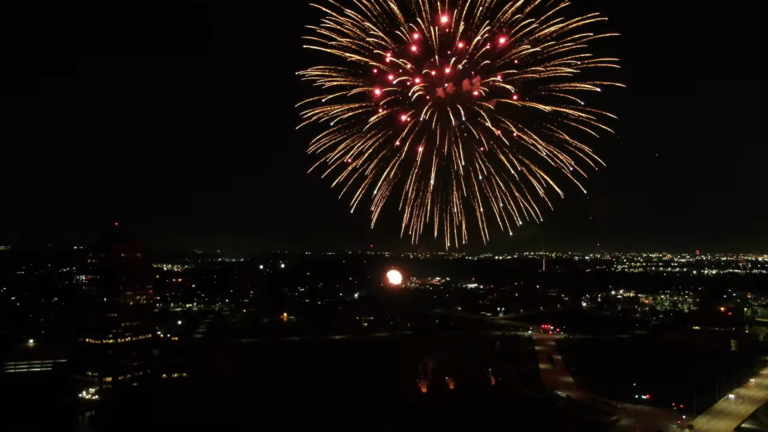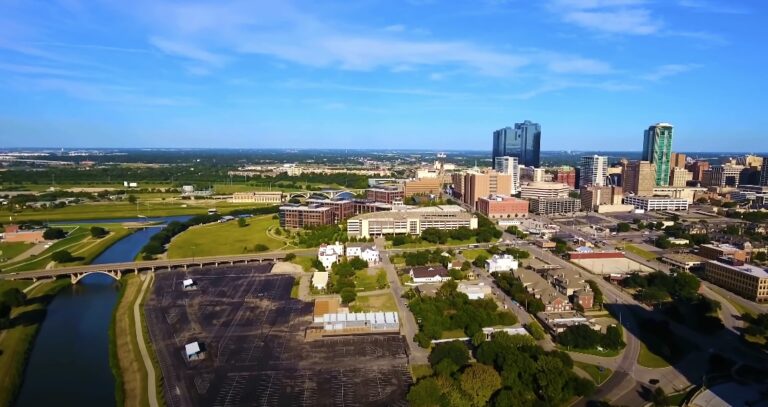Ever pondered which cities in Texas boast the finest weather? Many assume they know, whether they’ve set foot in the Lone Star State or have been lifelong residents. Texas is often painted with a broad brush as being predominantly hot and arid. Yet, the state’s climate story is richer than that simplistic view.
Texas Weather: A Tapestry of Climates
While Texas does bask under a hot sun and some regions echo with the crackling of dry earth, there are pockets where rain dances to the rhythm of the seasons and snow drapes the landscape in winter. From the arid west to the humid subtropics of the east, Texas’ vastness nurtures an array of weather patterns.
The northern tip, the panhandle, often has temperatures that are a good 10 degrees chillier than the rest of the state. In stark contrast, the sultry southern coasts are accustomed to torrential rains. Texas’ tempestuous side reveals itself in the form of hurricanes, tornadoes, thunderstorms, and ice storms, especially during early spring and winter.
If you’re intrigued by the prospect of delving into the intricacies of launching your own enterprise specializing in enhancing online visibility, uncovering the secrets to cultivating robust digital connections could be your next adventure. Discover the blueprint for establishing a thriving link building empire with insights from this comprehensive guide
Top Texas Cities for Weather Enthusiasts
Data, both historical and meteorological, suggests Houston tops the list among the six major Texas cities for its weather. But the list extends beyond the big six:
Houston’s Climate Canvas
Culture and Lifestyle
Houston isn’t just known for its vast size and diverse weather patterns; its vibrant culture is a testament to its rich history and cosmopolitan spirit. The city is a melting pot of cultures, reflecting its international influence and the southern hospitality that Texas is famed for.
Arts and Entertainment
From its world-renowned museums in the Museum District to the energetic theater scene downtown, Houston caters to the art aficionado and the casual observer alike. The Houston Symphony and the eclectic live music venues scattered throughout the city ensure that music lovers are never left wanting.
Culinary Delights
Additionally, Houston’s culinary landscape is as expansive as its physical terrain. With an array of dining options that span the globe, from authentic Tex-Mex and smoky barbecue joints to sophisticated international cuisines, Houston is a food lover’s paradise.
Innovation Hub
Beyond culture and food, Houston is also a hub for innovation. It’s home to the renowned Texas Medical Center, the world’s largest medical complex, and NASA’s Johnson Space Center, where human spaceflight training, research, and flight control are paramount. Houston, with its dynamic blend of cultural, culinary, and innovative prowess, offers an unmatched experience for both its residents and visitors.
Fredericksburg: A Blend of Charm and Climate
Heritage and Charm
Fredericksburg, with its cobblestone streets and vintage charm, harkens back to its German ancestry. The town’s Main Street brims with specialty boutiques, old-world bakeries, and bratwurst stands, offering a European feel in the heart of Texas. Its annual Oktoberfest celebrates its German heritage, drawing tourists with its authentic music, dance, and delectable German cuisine.

Attractions and Nature
Apart from its rich history, Fredericksburg offers natural beauty in abundance. Enchanted Rock, a massive pink granite dome, beckons hikers and nature enthusiasts alike. The town also lies in the heart of Texas wine country, boasting numerous vineyards and tasting rooms, making it a wine enthusiast’s dream destination.
A Hub for Artists
Furthermore, the town has a thriving art scene, with numerous galleries displaying works of local and national artists. Each month, the Fredericksburg Art Walk lights up the town, allowing visitors to immerse themselves in art while enjoying local wine and music. In essence, Fredericksburg effortlessly marries its Germanic heritage with Texan hospitality, offering a unique blend of history, nature, and culture for those who visit.
Odessa: Where Deserts Meet Skies
Economic Vibrancy
Odessa, being at the heart of the Permian Basin, has traditionally been a focal point for the oil industry. The city’s pulsating energy isn’t just from its oil wells but also from its thriving business scene and its people who exhibit tenacious spirit and resilience. The significant oil reserves have paved the way for countless job opportunities, drawing professionals from various fields, not just energy.
Cultural Blend
Odessa boasts a cultural milieu that’s rich and diverse. The Ellen Noel Art Museum, the Globe Theatre, and the annual Permian Basin Fair & Exposition are testament to the city’s commitment to the arts and its community spirit. With Friday night lights illuminating its high school football games, the city’s passion for sports is palpable.
A Glimpse into History
Historical landmarks like the Presidential Museum offer insights into past presidencies and the legacy of George H.W. Bush in West Texas. The Stonehenge replica on the University of Texas Permian Basin campus is both a nod to history and a point of interest for residents and visitors alike.
In essence, Odessa is more than just an oil town; it’s a blend of industry, arts, sports, and history, making it a vibrant West Texas gem.
Yearly Temperature Overview
Delve into a side-by-side evaluation of annual high and low temperature averages for some of Texas’ major cities: Austin, Houston, Dallas, San Antonio, and El Paso. Bear in mind, the provided data are estimations rooted in historical records; actual temperatures might see fluctuations annually.
The Lone Star State, Texas, spans multiple climate zones, lending each city its unique climatic characteristics. These average temperatures highlight just how varied the state can be:
Austin:
Known as the “Live Music Capital of the World”, Austin experiences temperate conditions with highs generally hovering around 79°F (26°C) and lows settling at approximately 59°F (15°C).
Houston:
As a coastal city, Houston’s proximity to the Gulf means its highs closely mirror 78°F (26°C), while its nights are slightly warmer, averaging around 60°F (16°C).
Dallas:
Dallas, being farther north, feels highs typically at 77°F (25°C), with cooler nights that draw near to 57°F (14°C).
San Antonio:
San Antonio, with its rich history and the famous Alamo, sees an average high temperature generally at 80°F (27°C), while its nighttime temperatures are about 60°F (16°C).
El Paso:
Situated at the western tip of Texas, El Paso’s desert climate means its highs usually reach around 78°F (26°C). However, its desert nights can be cooler, with lows circling 54°F (12°C).
These figures underscore Texas’s vastness, not just in terms of land but also in its climatic diversity, reflecting the uniqueness of each city within its borders.
Points of Reflection:
- Effects of Ocean Currents: Being adjacent to the Gulf, cities like Corpus Christi and Galveston are impacted by the warm Gulf Stream current, influencing their overall climatic temperament and often bringing warmer winters than the interior regions of Texas.
- Terrain and Wind Patterns: The vastness of Texas ensures a variety of landscapes. Regions like the Texas Panhandle, being flatter and more exposed, are often at the mercy of wind patterns, which can usher in rapid temperature changes.
- Land Cover Variations: A city surrounded by forests or bodies of water can have a different microclimate than a place surrounded by concrete or arid land. For instance, places like Tyler, which are more forested, could retain more humidity and stay cooler compared to drier regions.
- Distance from Major Water Bodies: Cities located farther from major lakes or rivers might not experience the same moderating effects on temperature that those closer to water bodies enjoy. Water has a higher heat capacity than land, so regions near significant water sources might have milder temperature fluctuations.
This multifaceted interplay between geographical location, terrain, and human intervention gives each Texan city its unique climate, illustrating the state’s vast and diverse environmental tapestry.
Sunshine Averages in Texas Cities
The tally of sunny days in various Texas cities diverges due to factors like location, atmospheric conditions, and seasonal changes. Here’s an estimated snapshot of the annual sunshine experienced by key Texan cities:
- El Paso: Typically sees between 300-320 days of sun yearly, thanks to its desert setting in the state’s western region. It’s among the brightest cities in Texas.
- Lubbock: Enjoys about 260-280 days drenched in sun each year. Being in the South Plains, its summers particularly shimmer in sunlight.
- Austin: Approximately 230-250 days bask in sunlight yearly. Nestled in Central Texas, Austin witnesses a harmonious blend of sunshine and rainfall.
- San Antonio: Receives around 220-240 sunny days a year. Positioned further south yet not distinctly coastal, its climate echoes Austin’s to a large extent.
- Dallas: Typically enjoys 230-250 sunlit days annually. The DFW region, while subject to fluctuating weather, predominantly basks in sunlight amid periodic stormy spells.
- Houston: Clocks in about 204-225 sunny days yearly. Its closeness to the Gulf results in more cloudiness and precipitation, especially during hurricane-prone periods.

- Corpus Christi: Has roughly 220-235 sunny days a year. As it lines the coast, it juggles between sun-drenched days and phases of heightened humidity with cloud overhangs.
- Fort Worth: Basks in about 230-250 sunny days yearly. Though its weather profile closely mirrors Dallas’, there might be minor discrepancies between the two.
- Amarillo: Experiences around 260-275 sunlit days annually. Situated in the Panhandle, it endures brisker winters yet enjoys ample sunlight year-round.
- Brownsville: Records about 230-245 sunny days each year. At Texas’ southern edge, it oscillates between clear, sunny days and humid, overcast conditions, given its Gulf proximity.
It’s pivotal to note that these numbers serve as general estimates. Definitions of a “sunny day” might differ based on sources: one might categorize a day that starts cloudy and turns sunny by noon as a sunny day, whereas another might adopt a more stringent criterion. For a more exact or current picture, consulting a meteorological service or a dedicated Texas weather archive would be recommended.
Influence of Altitude on Texas Climate
The terrain’s altitude profoundly shapes the climate in areas, and Texas, with its sprawling expanse and varied landscapes, is a prime illustration. Ranging from the Gulf Coast’s sea level to the towering Guadalupe Mountains surpassing 8,000 feet, Texas showcases the altitude’s dramatic effects on climate:
- Temperature Fluctuations: Generally, an elevation ascent of 1,000 feet results in a temperature decrease between 3.5°F and 5°F. Consequently, West Texas’s lofty regions, such as the Guadalupe and Davis Mountains, experience comparatively cooler temperatures, particularly at night.
- Air Composition: Higher terrains have rarified air. This impacts not just the temperature but can also reduce oxygen levels, which might be discernible to some travelers.
- Rainfall Distribution: Mountainous terrains can cause moist air to ascend, cool, and then condense, yielding rainfall on the wind-facing side. Conversely, the opposite side might experience a rain shadow phenomenon, getting significantly lesser moisture.
- Humidity Levels: Elevated regions generally exhibit reduced humidity. This characteristic is evident in locales like El Paso or Alpine, contrasting sharply with the humid atmospheres of coastal cities like Houston.
- Snow Dispersion: Elevated areas, notably in West Texas and the Panhandle, witness a higher frequency and amount of snowfall compared to the state’s lower regions.
- Day-Night Temperature Variation: Regions at higher altitudes often show a more marked difference between daytime and nighttime temperatures. This is especially noticeable in the desert and semi-desert areas of West Texas.
- Flora and Fauna: Altitude dictates the vegetation and wildlife in a location, subsequently influencing the local microclimate. For example, elevated areas might be home to pine forests, which can modify local humidity and temperatures.
- Air Purity: Elevated terrains generally offer purer air as many pollutants gravitate towards lower altitudes. However, particular geographical shapes, like valleys, might trap air, resulting in compromised air quality.
The stark climatic contrasts between Texas’s Panhandle’s High Plains, the Hill Country near Austin and San Antonio, the Trans-Pecos mountainous areas, and the coastal plains primarily arise from elevation differences. This varied topography bestows Texas with diverse climate zones, ranging from the humid subtropical east to the semi-arid west.
Texas Cities Optimal for Gardening
In determining the top gardening cities in Texas, one must consider numerous criteria such as temperature ranges, rainfall, soil conditions, length of the planting season, and the likelihood of extreme weather occurrences. Here’s a glimpse of cities apt for gardening with a succinct overview:
Houston:
Historical Significance: Houston, founded in 1836, is deeply rooted in Texan history. Named after General Sam Houston, the city has grown exponentially over the years and has become a nexus for space, health, and energy industries.
- Cultural Diversity: Boasting a rich tapestry of cultures, Houston is among the most ethnically diverse cities in the U.S. This diversity is reflected not only in its population but also in its culinary scene, festivals, and neighborhoods.
- Economic Vitality: Home to numerous Fortune 500 companies, Houston is an economic powerhouse in Texas. Its strategic position has made it a prime hub for oil and gas industries, as well as a key player in global trade.
- Infrastructure and Connectivity: Houston’s extensive road networks, along with its major ports and airports, make it a focal point for transportation and trade in the southern United States.
- Recreation and Green Spaces: Despite its urban sprawl, Houston prides itself on its numerous parks, green spaces, and bayous. The city’s commitment to creating an urban oasis offers residents and visitors alike an escape from the hustle and bustle of daily life.
Dallas/Fort Worth:
- Climate: While it maintains a humid subtropical classification, the Dallas-Fort Worth area tends to have slightly cooler winters than its southern counterparts.
- Positive: The relatively cooler climes can be a boon for certain crops, especially during transitional seasons like spring and fall.
- Challenge: However, it faces risks from late spring frosts, occasional hailstorms, and periods of intense summer heat.
El Paso:
- Cultural Heritage: Steeped in rich history, El Paso stands as a testament to the confluence of Mexican and American cultures. The city’s festivals, art scenes, and culinary delights beautifully encapsulate its vibrant heritage.
- Border Dynamics: As a border city, El Paso offers unique opportunities for cross-border trade and collaboration. It serves as a crucial nexus for interactions between the U.S. and Mexico, infusing the local economy with dynamism and diversity.
- Natural Beauty: With the Franklin Mountains slicing through the city, El Paso boasts scenic vistas and numerous hiking opportunities. The natural landscapes surrounding the city are not only visually stunning but also serve as a haven for outdoor enthusiasts.
- Safety and Community: In stark contrast to common misconceptions about border towns, El Paso has often been lauded as one of the safest cities of its size in the U.S. The strong sense of community, paired with efficient law enforcement, contributes to this commendable distinction.
- Economic Growth: Despite its arid environment, El Paso has witnessed steady economic growth. It has become a hub for manufacturing, trade, and healthcare, underpinning the city’s resilience and adaptability.
Lubbock:
- Climate: Lubbock’s climate leans towards semi-arid, characterized by cold winters and scorching summers.
- Positive: It’s particularly well-suited for plants that thrive in drought conditions.
- Challenge: The city, however, does occasionally experience severe weather phenomena like hailstorms and unexpected frosts.
Corpus Christi:
- Climate: The humid subtropical climate here is influenced by its closeness to the Gulf, resulting in relatively milder winters.
- Positive: This is advantageous for growing tropical plants and offers a prolonged growing season.
- Challenge: On the flip side, being on the coast, it faces hurricane risks, and the salt spray might adversely affect some plants.
When evaluating Texas cities for gardening pursuits, it’s paramount to factor in the types of plants one aspires to grow. Some cities might be paradises for tropical flora, while others might shine for desert plants or traditional veggie gardens. Microclimates within these cities can also play a significant role, as local conditions might vary substantially, influenced by topographical factors and urban sprawl.
In choosing a Texan city for gardening, the specific plant species one wishes to grow is pivotal. While one locale might be a haven for tropical species, another might favor drought-resilient plants or classic vegetable patches. It’s also beneficial to account for microclimates within urban areas, as even within a city, climatic conditions can deviate considerably due to factors like elevation, water proximity, and urban expansion.
Climate Highlights of Texas Regions: Pros and Cons
South Texas (Including San Antonio and Laredo)
Advantages: Winters are mild, and the region enjoys abundant sunshine almost all year round.
Drawbacks: The heat during summers can be intense, accompanied by high humidity levels.
Central Texas (Including Austin and Waco)
Advantages: The winters are bearable, and the region offers a nice balance of humidity.
Drawbacks: While summers can be hot, they are slightly less humid than the coastal regions.
North Texas (Including Dallas-Fort Worth)
Advantages: The area offers a variety of seasons with relatively moderate winters.
Drawbacks: Summers can be sweltering, and the region is susceptible to both thunderstorms and tornado activity.
East Texas (Including Tyler and Longview)
Advantages: The landscape is lush and green with mild winters, making it quite picturesque.
Drawbacks: Due to its high humidity, it’s prone to thunderstorms and can feel quite sticky in the summertime.
West Texas (Including El Paso and Lubbock)
Advantages: The humidity is on the lower side, leading to cooler evenings that are often a respite.
Drawbacks: While summers are hot, winters can be chilly, and the region can get quite windy.
Texas Hill Country (Including Fredericksburg and Kerrville)
Advantages: The region boasts breathtaking scenery and summers that are a tad milder compared to other Texas regions.
Drawbacks: It’s not immune to the dangers of flash floods, particularly in the spring and autumn months.
Texas Panhandle (Including Amarillo)
Advantages: Summer temperatures tend to be cooler compared to the rest of Texas, offering a more temperate climate.
Drawbacks: Winters can be quite cold, and the area is at risk from both snowfall and tornadoes.
Ultimately, the “ideal” weather is subjective and depends on individual preferences regarding temperature, humidity, and other climatic conditions. Every region in Texas boasts its unique charms and challenges, so the best choice depends on one’s specific desires and weather inclinations.
Choosing the “perfect climate” region in Texas largely depends on personal preferences. Factors such as temperature tolerance, humidity comfort levels, and other weather parameters play into this decision. Each Texas region has its unique climatic attributes, both favorable and less so. Thus, the optimal location is subjective, hinging on individual requirements and perceptions of ideal weather conditions.






